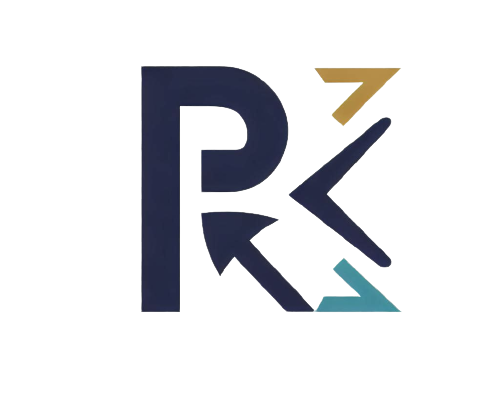
The internet has transformed the way we access information, allowing us to connect with the world and exchange ideas like never before. However, this newfound freedom comes with a dark side: internet censorship. Explore the fascinating world of status codes for internet censorship and how they affect our ability to access information freely. Understanding these status codes is crucial in grasping the impact of internet censorship on our online experience and the implications it has on free speech.
Status codes are three-digit numbers that represent the response of a web server to a request made by a user’s browser. They are an integral part of the Hypertext Transfer Protocol (HTTP), responsible for facilitating communication between clients and servers. When you enter a website’s URL into your browser, the server sends back a status code to inform your browser about the success or failure of the request. Some common status codes include the 200 OK, 404 Not Found, 403 Forbidden, 503 Service Unavailable, and 451 Unavailable For Legal Reasons. Each status code serves a unique purpose in conveying information about the server’s response.
We encounter various status codes that govern the way websites and servers communicate with our web browsers. From the familiar 404 – Page Not Found to the reassuring 200 – OK, these codes help us navigate the online landscape effortlessly. However, among these, one status code stands out for its significance in the context of internet censorship: HTTP 451. In this article, we’ll delve into the world of HTTP 451, its origin, working mechanism, challenges, and its implications for internet freedom.
What is HTTP 451?
HTTP 451, also known as “Unavailable For Legal Reasons,” is an HTTP status code that was introduced to indicate instances where a server refuses to serve content due to legal censorship. Its origin can be traced back to the brilliant mind of Tim Bray, who proposed its introduction to tackle the rising issue of internet censorship across the globe. The number “451” was chosen as a nod to Ray Bradbury’s dystopian novel “Fahrenheit 451,” where books are banned and burned to suppress information and ideas.
Tim Bray, a renowned software developer and one of the co-authors of the original XML specification, recognized the need for a censorship-related status code. He envisioned a standardized way to inform users and developers that a webpage or resource was not accessible due to legal reasons, as opposed to technical glitches or broken links. Collaborating with like-minded individuals, he spearheaded the development of HTTP 451 to address this critical gap in HTTP status codes.
How HTTP 451 Works
When a server returns HTTP 451, it explicitly notifies the client that the requested resource is unavailable due to legal reasons. This could be a consequence of government orders, court orders, or other legal mandates aiming to restrict access to certain content. As a result, the server refuses to display the requested page, and the client’s browser receives the HTTP 451 status code instead. Clients can interpret this code and respond accordingly, helping users understand that censorship, not technical errors, is the cause of the unavailability.
Despite its noble intentions, HTTP 451 has faced its share of challenges and controversies. One common concern is the potential for misuse, where authorities may wield the code to suppress dissenting voices or manipulate public opinion. Additionally, there have been instances of false positives, where websites were incorrectly flagged and labeled as censored when they were not. Striking a balance between combating illegal content and preserving freedom of expression remains an ongoing challenge.
Implications for Internet Freedom
The introduction of HTTP 451 has significant implications for internet freedom. On one hand, it serves as a powerful tool to raise awareness about online censorship, shedding light on the regions or topics affected by government restrictions. On the other hand, its misuse can lead to further erosion of digital rights and stifle open dialogue and access to information. For netizens living under oppressive regimes, HTTP 451 can become both a beacon of hope and a stark reminder of the limitations imposed upon them.
In the fight for digital rights and online freedom, HTTP 451 plays a crucial role. Digital rights advocacy groups and organizations have embraced this status code as a symbol of their mission to protect internet openness. They actively promote its adoption and encourage internet users to stay informed about their digital rights and how to circumvent censorship using lawful means. Through education and technology, these advocates strive to empower individuals and communities to navigate through a censored cyberspace.
The Future of HTTP 451
As the internet continues to evolve, the significance of HTTP 451 grows in parallel. Technical experts and policymakers remain actively engaged in ongoing discussions, seeking to refine the code and maximize its effectiveness while safeguarding against potential misuse. Transparent implementation and clear guidelines for its application are vital to maintaining the integrity of HTTP 451. In today’s world, where digital rights face perpetual threats, this status code serves as a crucial safeguard in upholding a free and open internet. As we navigate the complexities of the online realm, staying vigilant and committed to preserving digital freedoms will be instrumental in ensuring that HTTP 451 continues to play a pivotal role in promoting a cyberspace that respects the right to access information and express ideas freely.
HTTP 451 – the status code for internet censorship – serves as a poignant reminder of the challenges faced in the digital age. From its conception by Tim Bray to its impact on internet freedom and digital rights advocacy, this status code has come to symbolize the delicate balance between legal restrictions and the preservation of open expression. As internet users, developers, and advocates, we must stay informed about the implications of HTTP 451 and continue to strive for an online world where access to information remains unrestricted and the exchange of ideas flourishes freely.
